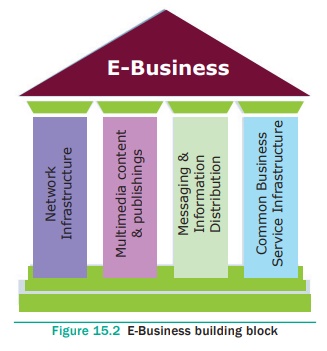Computer Applications - Introduction to E-Commerce | 12th Computer Applications : Chapter 15 : E-Commerce
Chapter: 12th Computer Applications : Chapter 15 : E-Commerce
Introduction to E-Commerce

E-Commerce
Introduction to E-Commerce
“The wise possess all”. Anyone who is quick to
identify and adopt innovation will be successful. Commerce always profits from innovations.
Successful businesses quickly identify developing opportunities in emerging new
technology, and expand their commercial capabilities.
The
customer goes to the market, checking out a variety of products, choosing
required stuff, purchasing them and then paying the specific amount is
traditional commerce. However, recent ways of buying or selling goods and
services have come up with technology innovations.
In near
future commercial activities such as buying or selling of goods between
merchant and consumer will be forgotten.

As growth
in technology and vast usage of internet, our style of living has changed and
this has also modified the working of commercial trade. Refer Figure 15.1.
In 1996, IBM coined the term E-Business. Just, as
business is broader than commerce, E-Commerce is a subset of E-Business.
E-Commerce is commercial transaction through Internet, but E-Business entirely
depends on the Internet for its every intra-company and inter-company
activities such as procurement of raw materials, marketing, finance,
manufacturing, selling and negotiation.
While, E- Commerce is limited with monetary
transactions using Internet E-Business is grounded on technologies such as
Network Infrastructures (like Internet, Intranet, Extranet), Multimedia content
& network publishing infrastructures (like HTML, Online Marketing),
Messaging & information distribution infrastructures (like EDI, e-mail,
http, Computerized Inventory Management Systems) and other Common business
service infrastructures (like electronic payments gateways, globalized Supply
Chain Management (SCM), Online Transaction Processing). See Figure 15.2

A company
is set to have E-Business if and only if
● It has
the ability to conduct business electronically over Internet.
● It
manages payment transaction through Internet.
● It has
a platform for selling products & services via Internet.
E-Commerce
E-Commerce
is currently one of the most important aspects of the Internet era. Just like
the words e-mail, e-book with the prefix ‘e’ (‘e’ stands for electronic)
Commerce and Internet makes E -Commerce. It also allows the consumers to
exchange goods and services with no barrier of time or distance. Electronic commerce
has expanded rapidly over the past few years and is predicted to accelerate.
E-Commerce can be described as the process of buying or selling
products, services or information via computer networks.
It could be a consumer based retail site or auction
site or trade between large business organizations. The commodity could be a
laptop or a wrist watch or it could be an operating system or a simple browser
plugin.
The Physical products which can be seen are
touched. They are distinct from intangible goods which have value but are not
physical entities.
Tangibles
products may be like printed books, CD’s and DVD’s, lamp etc., Intangible
products may be like digital files, downloaded video games, music files are
movies which can not be physically touch. Refer Figure 15.3

● Goods - e.g. mobile phones, digital cameras,
clothes, accessories, antivirus.
● Information - e.g. subscription to some
newspapers, scientific journals, television channels.
● Services - e.g. matrimonial services, placement
services.
● Tangible form – e.g. a digital camera purchased
by a consumer from an online shopping website which might be delivered at the
requested address.
● Electronic
form – e.g. a music album or a software downloaded from a site which might be
delivered in electronic form.
Related Topics